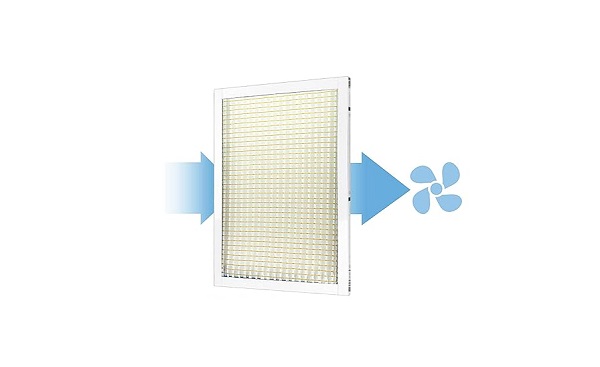In the modern era, prioritizing indoor air quality has become increasingly critical, highlighting the significance of selecting the appropriate air filter for your HVAC system. These filters serve as frontline defenses, crucial in capturing airborne particles, allergens, and contaminants to enhance the air quality within residential or commercial environments. With an abundance of choices on the market, comprehending the array of air filter materials is key to making a well-informed decision.
This article aims to explore the diverse spectrum of air filter materials, emphasizing their relevance, particularly concerning the widely utilized 20x30x1 air filters. By understanding the nuances of each material, individuals can confidently choose filters tailored to their specific needs, ensuring cleaner and healthier indoor air for occupants.
Understanding Air Filter Materials
Air filters are crafted from different types of air filter materials, each with its unique properties and filtration capabilities. These materials determine the efficiency of the filter in capturing particles of varying sizes. Here are some common air filter materials:
1. Fiberglass
- Fiberglass filters are the most basic and economical option available.
- They consist of layered fiberglass fibers designed to capture larger particles like dust and lint.
- While they are not as effective at capturing smaller particles or allergens, they provide minimal filtration for basic air quality improvement.
2. Pleated Media
- Pleated media filters are constructed from polyester or cotton paper-like material folded into pleats.
- These filters offer higher efficiency compared to fiberglass filters, capable of capturing smaller particles such as pollen, pet dander, and mold spores.
- Pleated filters provide better airflow and longer lifespan due to their increased surface area.
3. HEPA (High-Efficiency Particulate Air) Filters
- HEPA filters are renowned for their exceptional filtration efficiency, capturing up to 99.97% of particles as small as 0.3 microns.
- Constructed from densely packed glass fibers, HEPA filters are highly effective in trapping microscopic particles, including bacteria, viruses, and smoke.
- These filters are ideal for individuals with allergies, asthma, or respiratory sensitivities, as they provide superior air purification.
4. Electrostatic Filters
- Electrostatic filters use electrostatic charges to attract and trap airborne particles.
- They can be either washable or disposable and are effective at capturing both large and small particles.
- However, washable electrostatic filters may lose efficiency over time if not cleaned regularly, while disposable ones offer consistent performance throughout their lifespan.
5. Activated Carbon Filters
- Activated carbon filters contain a layer of activated carbon, which absorbs odors, gasses, and volatile organic compounds (VOCs) from the air.
- While not as effective in capturing particulate matter, they excel at removing unwanted smells and chemicals, making them suitable for environments prone to cooking odors or tobacco smoke.
Choosing the Right Size: 20x30x1 Air Filters

Selecting the right air filter size is paramount for maximizing the efficiency of your HVAC system. Air filter dimensions are commonly expressed in length, width, and thickness, such as a 20x30x1 air filter, which signifies 20 inches in length, 30 inches in width, and 1 inch in thickness. To ensure proper fit and functionality, it’s imperative to refer to your HVAC system’s specifications or inspect your existing filter size before purchasing a replacement. Investing in the correct size filter not only optimizes air filtration but also prevents air leaks and ensures consistent airflow throughout your home, ultimately contributing to improved indoor air quality and energy efficiency.
Factors to Consider When Choosing Air Filter Materials
Several factors should be considered when choosing air filter materials:
- Filtration Efficiency: Evaluate the filtration efficiency of the material based on your indoor air quality needs. HEPA filters offer the highest level of filtration, while fiberglass filters provide basic filtration.
- Allergen Protection: If you suffer from allergies or asthma, opt for filters capable of capturing allergens such as pollen, pet dander, and mold spores.
- Lifespan and Maintenance: Consider the lifespan and maintenance requirements of the filter material. Some filters are disposable and need replacement every few months, while others are washable and reusable.
- Airflow: Ensure that the selected filter material allows sufficient airflow through your HVAC system to prevent strain and inefficiency.
- Cost: Balance the initial cost of the filter material with its long-term benefits and performance to determine the most cost-effective option for your needs.
Conclusion
In conclusion, the selection of the appropriate air filter material is paramount in promoting superior indoor air quality and sustaining a wholesome living environment. Whether you opt for fiberglass, pleated media, HEPA, electrostatic, or activated carbon filters, each material presents distinct advantages and filtration capabilities.
When deliberating on air filters, crucial factors such as filtration efficiency, allergen protection, longevity, airflow optimization, and cost-effectiveness should be taken into account to arrive at an informed decision. By ensuring the right air filter, such as a 20x30x1 air filter tailored to your HVAC system, is in place, you can enjoy peace of mind, confident in the knowledge that your indoor air is purified and devoid of detrimental contaminants, fostering a healthier atmosphere for you and your loved ones.
Read also:
- 10 Smart Kitchen Technologies That All Homes Should Have
- How Much Does It Cost to Install a Home Security System?
- Making Art for Home Decor – Use VanceAI Art Generator to Enhance Your Living Space
- What Do Innocams Mean and Everything You Should Know
- OpenHousePerth.net Insurance: Your Trusted Partner for Reliable Solutions

